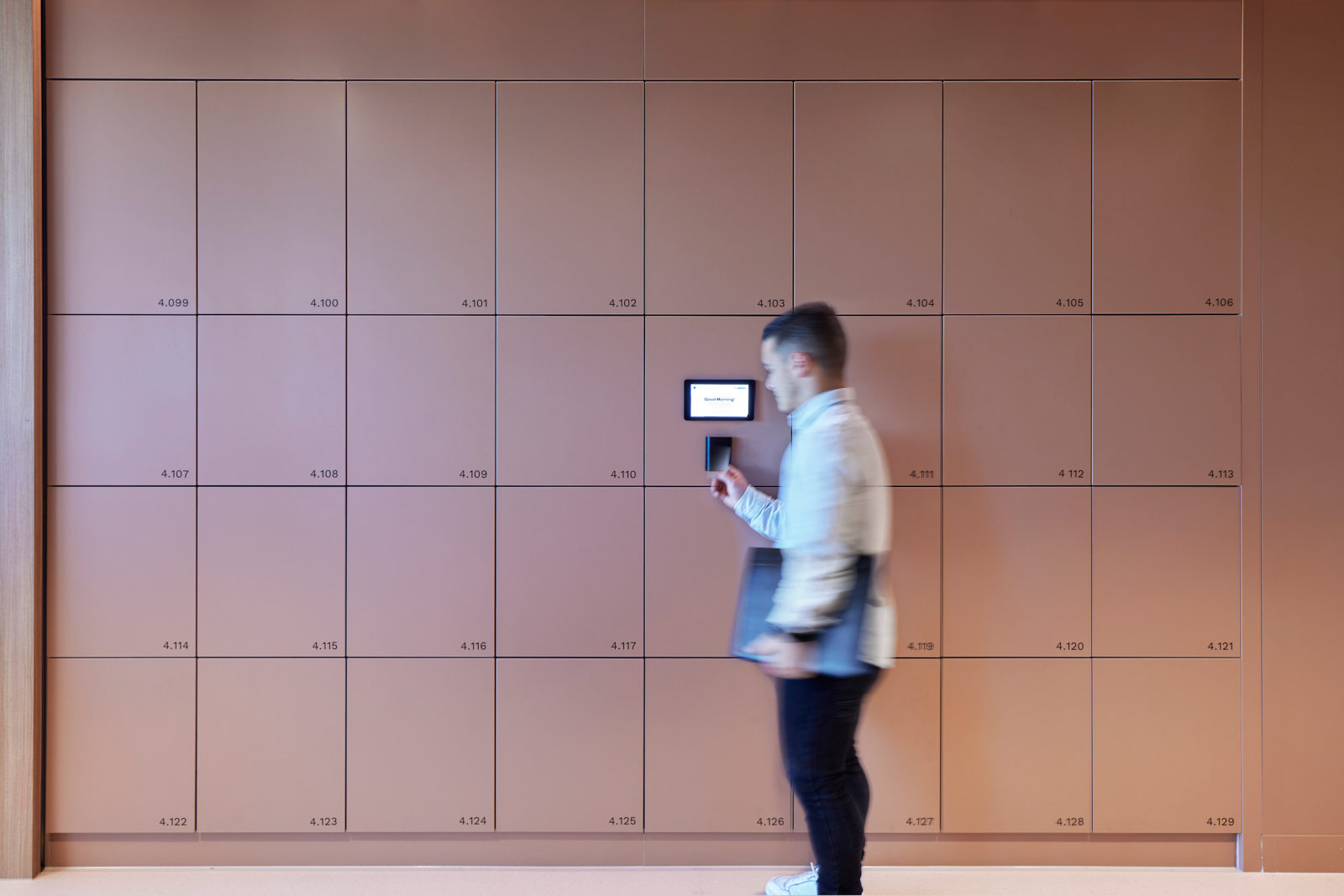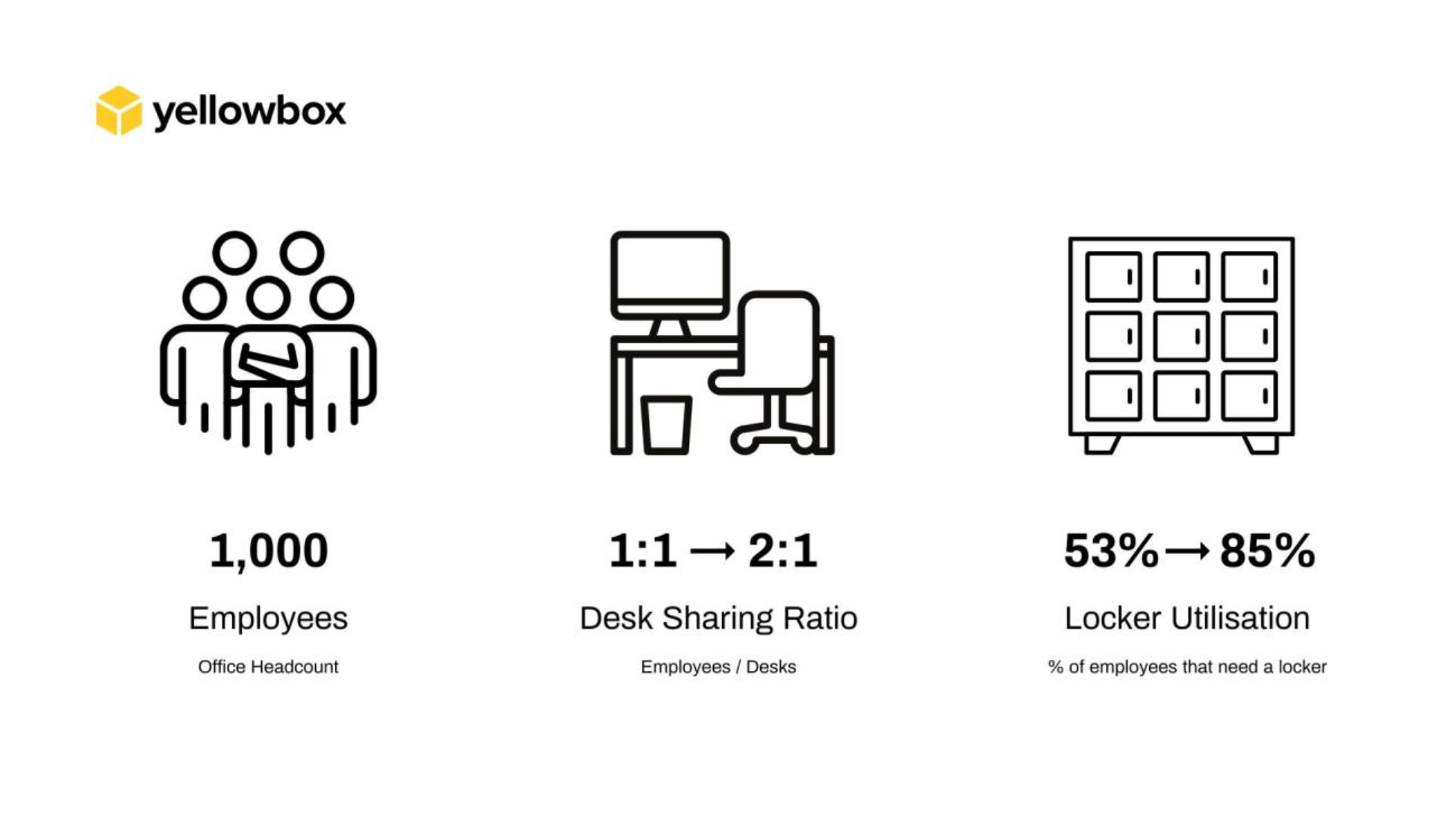The Unexpected Rise in Workplace Lockers

This article explores the rising significance of workplace lockers in modern office design, driven by hybrid work and space optimization. It highlights the shift from traditional to smart lockers, emphasizing their role in improving flexibility and resource efficiency.

THE UNEXPECTED RISE IN WORKPLACE LOCKERS
Once merely functional and often overlooked, office lockers have emerged as a cornerstone of modern workplace design. Historically, personal storage was confined to desks and under-desk cabinets, seen as the employee's homebase for work accessories and personal items.
Shaun Baker
Shaun Baker
Since then, offices have transformed significantly over the past decades with the rise of hybrid work. In fact, experts have been perceptive to this trend over a decade ago, “To unlock the potential of the new collaborative workspace, lockers will most definitely be required,” said , Head of Design for Morgan Lovell in 2012.
Factors Driving the Rise
Knight Frank
Knight Frank
The rise of remote and flexible work arrangements, with a sizable portion of employees working from home on any given day, has led employers to rethink how to best use their space. According to , half of the largest international employers are planning to cut their office space in the next three years, opting for a hot desking model. Hot desking is a system where workspaces are not assigned to specific employees and can be used on a needs basis.
“What has this got to do with lockers? Well as soon as you shave away at personal space and remove the safe haven of an assigned desk, it is even more critical to give over a space for staff to keep their things,” Shaun highlights.
Yellowbox
Yellowbox
In fact, data from , leader in workplace smart lockers, found that increasing the ratio of employees per desk from 1:1 to 2:1 has led to a 61% rise in locker utilization, emphasizing the rise in need for lockers.

Yellowbox data
Yellowbox data
Infographic on the impact of desk sharing ratio on locker utilization, according to .
From Afterthought to Architectual Element
For designers, lockers have historically been an afterthought, relegated to the hallway, away from the main floor. But now designers are leveraging lockers as architectural elements, functional break points within open plan offices, as walls within four walls to break spaces up.
Viola Vallon
Viola Vallon
“Lockers today play a significant role in not only effectively storing items but also shaping the unique ambiance of a workspace.” said , Senior Industrial Designer Steelcase.
Challenges for Workplace Managers and Designers
Managing traditional lockers presents several logistical hurdles. These include the hassles of handing out physical keys, locksmith call outs for lost keys, maintaining updated assignment lists, and handling frequently forgotten self-assigned PINs—all of which can burden both employees and management.
Moreover, while lockers are designed to be space-efficient, the actual space needed to assign each employee with a locker often exceeds what is available, especially in compact office environments. This discrepancy poses a significant challenge: ensuring adequate personal storage for every employee within limited space constraints.
Fortunately, advancements in IoT (Internet of Things) technology have paved the way for smart lockers to solve the issues core issues traditional key and code lockers create.
The Evolution of Lockers: Smart Lockers
Today's lockers are more than just storage spaces. They have evolved to meet the needs of the modern workplace. Smart lockers are self-serve and can be booked and opened with existing building access cards and an employee's mobile phone, facilitating a seamless user experience.
Features like automated onboarding, utilization tracking and ongoing management ensure lockers do not become a cost-sink burden to facilities management.
utilization data
utilization data
Perhaps most important of all, smart lockers allow workplaces to provide personal storage for all employees without having a locker per employee. Workplaces can set a percentage of lockers for hot locker use, which means employees can book and access storage when they need it. Based on from Yellowbox, workplaces can save on average 40-50% on lockers and space, through implementing an optimized hot locker model.
Outlook
The rise of office lockers is a key indicator of how deeply the nature of work and workplace requirements have changed. As we move towards more dynamic and flexible office environments, the evolution of storage solutions like lockers will play a pivotal role in shaping modern workplaces. Innovations within the space will continue to improve workplace experience and maximize resource efficiency.


